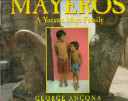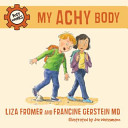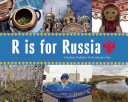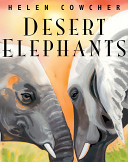
Text and photographs present the life and customs of the descendants of the Maya now living in the Yucatan Peninsula area of Mexico.
Nonfiction genre

Text and photographs present the life and customs of the descendants of the Maya now living in the Yucatan Peninsula area of Mexico.

Young children are full of questions about how their bodies work. With straightforward, easy-to-understand language and a playful attitude, Liza Fromer and Francine Gerstein MD have collaborated to create books packed with solid information about the intricacies of the human body. Their reassuring text describes the body’s various systems and supplies parents and caregivers with answers that will help them provide the accurate, age-appropriate information young children need.
My Achy Body describes the central nervous system. What is happening to us when we feel pain, and how does our body repair itself when we are hurt?

Where do the bubbles come from in a piece of cake? Why do triangles make a structure stronger? And how come magnets don’t stick to the wall? This colorful and straightforward introduction to the physical sciences gives young readers an easy-to-understand overview of such concepts as materials, forces, structures, solids, liquids and gases. Explanations are accompanied by simple, fun activities, including building a structure out of dried spaghetti and inflating a balloon with a gas made by combining vinegar and baking soda. Parents and teachers will find more explanations, activity ideas and a helpful glossary in the back.

Learning about buildings and how they are constructed has never been so much fun. This gem of a book introduces young readers to basic construction concepts through the eyes of five friends keen on building a doghouse for their pet pooch, Max. To find out more about the task, Yulee, Martin, Nick, Sally and Pedro head to the library, where they learn about foundations, beams, frames and other building fundamentals. Fun facts, bright illustrations and comic-book-style discussions among the characters add to the mix. An activity at the end of the book invites readers to make their own mini doghouse out of marshmallows, paper, glue and craft sticks.

My Messy Body describes the purpose of the body’s secretions, including tears, sweat, snot, pee, poo, earwax, vomit, pus, and mucus. The Body Works series provides straightforward answers to many of the questions children often wonder about.

My Noisy Body describes the digestive system and the meaning of the noises it creates, including burps, hiccups, stomach growls, farts, sneezes, and coughs. This book describes the body’s various systems and why they are important to overall health, along with a helpful Glossary.

My Stretchy Body describes how we grow, including hair, skin, nails, teeth, muscles, and bones, as well as growth spurts and growing pains.

From Dacha to Winter Palace, from Easter Eggs to Kremlin, here is a photographic alphabet of everything we love best about Russia. The Russian Federation is a vast land of forests and steppes, deserts, rivers, lakes and big cities. Over centuries of splendour, revolution and change, our country has produced some of the greatest scientists, sportsmen and women, writers, dancers and composers in the world. As you turn the pages of this book, you will see many of the things which make Russia so special: its fine palaces and churches, its musical and cultural traditions, its magnificent scenery and spectacular winter landscapes – and you will also see the food, the sports, as well as ordinary Russian people going about their everyday lives.


Each year the desert elephants of Mali, West Africa, travel a 300-mile path to search for water. They peacefully pass through the lands of the Tuareg, Dogon, and Fulani people while following the longest migration route of any elephant in the world.